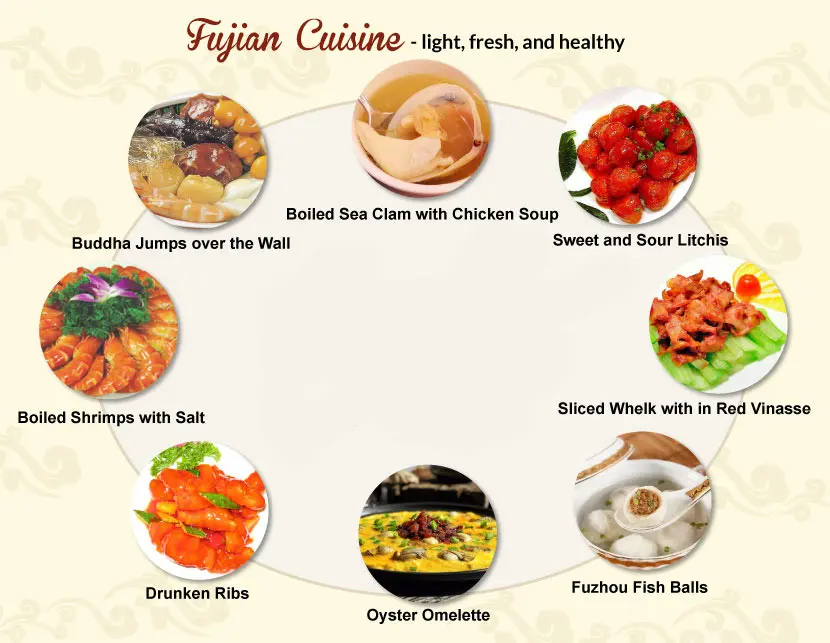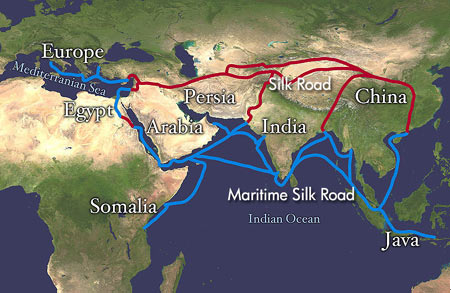Fujian Cuisine
Fujian is a place that emphasizes the original taste of the food, pretty similar to Shandong cuisine but not so much either. It is also the place where I was born. I remember eating Fujian cuisine at a very young age where seafood was almost served in every meal. It is because Fujian people often travel by sea and rely on the sea for survival, so their dietary customs have gradually formed a unique cuisine with various characteristics.
Historical Facts
Just like the other cuisines, Fujian Cuisine has a long history as well. As early as the “Yongjia Rebellion” * during the Jin Dynasty (265-420 CE) and the Southern and Northern Dynasties, a large number of well-dressed nobles from the Central Plains entered Fujian, bringing advanced science, technology, and culture from the Central Plains. The mixing and exchange with the ancient Yue culture in Fujian promoted local development. In the Song Dynasty (970-1290 AD), the Maritime Silk Road opened up the market for Fujian to absorb and share food techniques from other places. Based on inheriting traditional techniques, Fujian cuisine draws on the essence of various dishes, adjusts and changes the rough and smooth styles, gradually evolves towards fine, light, and elegant qualities, and develops into an advanced-style Fujian cuisine system.
*Yongjia Rebellion: a Chinese historical event that happened around 311 CE. 
Special Features
Ingredients
Due to the geographical situation of Fujian, it is close to mountains and sea, with mountains in the north and sea in the south. The vast mountainous areas are rich in mushrooms, bamboo shoots, white fungus, lotus seeds, and delicacies such as stone scales, river eels, and soft-shell turtles; the long shallow beaches are rich in seafood such as fish, shrimps, and clams all year round. In the plain and hilly areas, rice, sugar, vegetables, and fruits are famous both at home and abroad.
Condiments and Techniques
Fujian residents use something very special that other cuisine doesn’t use: red vinasse. Red vinasse is the vinasse of rice wine or yellow wine fermented with red yeast, which is highly nutritive. The use of it makes the dish a wine aroma and a beautiful appearance. Other than that, Fujian cuisine also implement sugar and vinegar in their dishes: sugar is used to remove unwanted bad smell and vinegar is used to make food have a refreshing smell. This is why Fujian cuisine is famous with its food being sweet but not cloying, and light but not tasteless.
vinasse. Red vinasse is the vinasse of rice wine or yellow wine fermented with red yeast, which is highly nutritive. The use of it makes the dish a wine aroma and a beautiful appearance. Other than that, Fujian cuisine also implement sugar and vinegar in their dishes: sugar is used to remove unwanted bad smell and vinegar is used to make food have a refreshing smell. This is why Fujian cuisine is famous with its food being sweet but not cloying, and light but not tasteless.
If I can describe Fujian cuisine in three words: light, sweet, and sour. From my personal experience, I remember my aunt would brew a lot of soup as a base for her dishes. Fujian cuisine has long associated cooking with ensuring that the raw materials are fresh, pure, and nutritious. Based on long-term accumulated experience, it is believed that soups are the best way to maintain the essence and original taste of raw materials, so there are many exquisite soups. Some are as white as milk, sweet and refreshing; some are as clear as water, fresh in color and delicious; some are golden and clear, fragrant; some are thick and tangy.
Chiefs attach great importance to cutting techniques as well. The slices should be as thin as paper, and the shreds should be like hairs. The chefs can even make material into the shape of a blossoming flower with a kitchen knife. Dishes of different styles have different demands for cutting methods so that the cooked dishes retain the original taste and texture better (TravelChinaGuide).
Some of the Notable Fujian Cuisine:
- Buddha Jumps Over the Wall
- Fuzhou Fish balls
- Lychee Pork






I really enjoyed learning about this different style of food. I love eating this kind of food, but I had no idea there was an interesting backstory, or why certain ingredients are in it. I like how you started with the history of the food and why it came to be, and then went into the ingredients and what the ingredients do in the food. How long have these specific food recipes been around? Have they been around for centuries or are they newer foods using the old techniques?